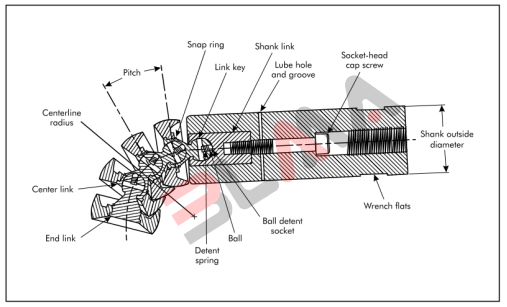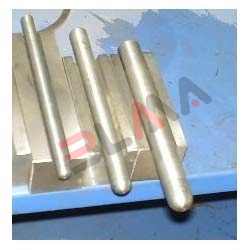How to choose the right mandrel for mandrel pipe bending machine? We first need to know the type of mandrel.
Types of Mandrels
PS: Wall factor = Outside diameter/Wall thickness
Ball Mandrel
Standard ball mandrel is one of the most well-known types of mandrel used to support tubes. It is designed to provide special internal support beyond the curvature of the tubes, depending on the amount placed across the curved section. Mandrels are available for pipes with regular wall thickness (wall factor from 15mm to 70mm) and average radius. The mandrel can be moved in multiple directions, and this flexibility allows the formation of multi-radius molds. Single-planar mandrels can also be used if desired, but they do not provide particularly precise operation. The mandrel is used and fixed in conjunction with scraping dies, clamps and pressure dies when bending pipes of normal wall thickness.

Plug Mandrel
A plug mandrel is a solid rod especially used for heavy duty thick wall pipes and larger radius. It is mainly used for International Pipe Sizing (IPS) jobs without the help of wiper dies.

Formed-tip Mandrel
The forming mandrel is a variation of the plug mandrel, but it contains a radius cut at its tip to match the bend radius to create a more precise and damage-free bend. A shaped end provides special support inside the tube. These mandrels are typically used for heavier, thick-walled pipes with an average radius.
Inserted-ball Mandrel
The Inserted-ball mandrel contains a replaceable nose piece, it is suitable for a variety of high volume bending operations. If the nose piece is damaged, it is more economical that you just need to replace it instead of replacing the entire mandrel shank.
Thin Wall Mandrel
The thin wall mandrel also known as the close-pitch mandrel, which is widely used for thinner walls with a wall factor of 70 or more and a tight radius. Ultra-thin-walls or ultra-close pitch mandrel is a modification of thin wall mandrels, and can be used for the thinnest wall factor of 200 or more and with the tightest radius.
Thin-walled mandrels, also known as near-pitch mandrels, is widely used for thin-walled with a wall coefficient of more than 70 and a tight radius. Ultra Thin Wall or Ultra Close Mandrels are an improvement on thin wall mandrels and can be used for the thinnest walls (a wall factor above 200) and the tightest radius.




 English
English français
français русский
русский español
español português
português العربية
العربية Türkçe
Türkçe ไทย
ไทย Tiếng việt
Tiếng việt chinese
chinese




